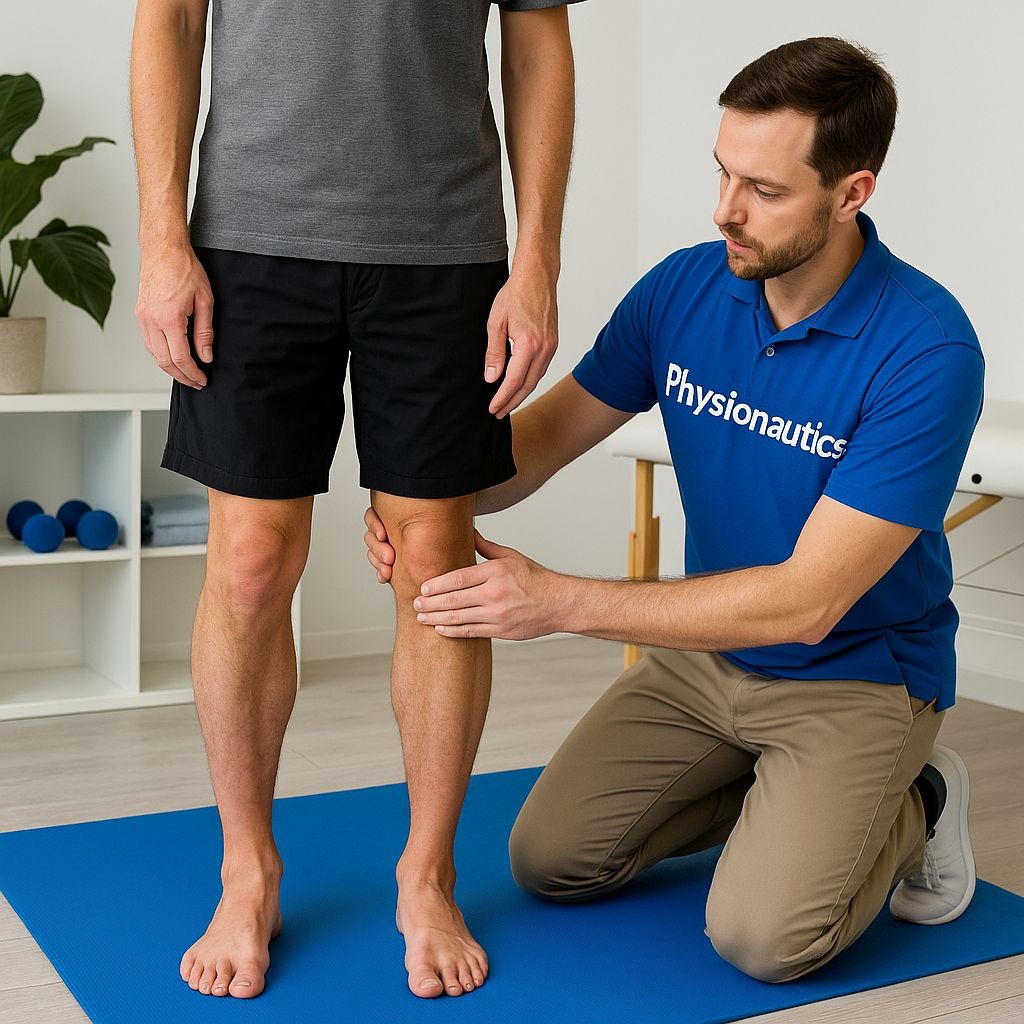



Hey, have you ever had that weird numb feeling in your arm or some pain in your neck and shoulder that just won’t go away? It could be thoracic outlet syndrome (TOS) – a condition that might sound scary but is more common than you think. Let’s break it down and talk about what it is, why it happens, and how Physionautics deal with it all in easy-to-understand terms. So, What Is Thoracic Outlet Syndrome? think of your thoracic outlet as a small space between your collarbone and the top of your ribs. This space is home to some pretty important stuff: nerves, arteries, and veins that go from your neck down into your arms. When something messes with this space, it can cause your nerves or blood vessels to get squeezed. This squeeze causes the symptoms of thoracic outlet syndrome. What Causes TOS? There are a few things that can mess with this delicate space. Here’s what could be happening: Bad Posture: sitting hunched over your phone or computer for hours can make the muscles around your neck and shoulders tighter. Over time, this could put pressure on the nerves and blood vessels in the thoracic outlet. Repetitive Movements: if you're always doing the same movement with your arms (like lifting weights or playing tennis), it could wear out muscles in the area, leading to TOS. Injury or Accident: past injury like a car accident or even something like carrying heavy bags could mess with the thoracic outlet space. Anatomy: some people are born with extra ribs or other body structures that make them more likely to develop TOS. Symptoms: What Does It Feel Like? If you are dealing with TOS, the symptoms can be super annoying and uncomfortable and you might experience: numbness or tingling in your fingers – ever feel like your hand is 'falling asleep'? That's what this feels like. pain in your neck, shoulders, or arms – it might hurt to move or even when you're just chilling. weakness in your arm or hand – holding stuff or doing simple tasks can feel like a workout. swelling or discoloration of the hand – blood flow might be affected, making your hand look puffy or change color. Types of Thoracic Outlet Syndrome There are three main types of TOS, each with its own causes and symptoms: Neurogenic TOS – this is the most common and happens when the nerves are compressed. It leads to the numbness, tingling, and weakness we talked about earlier. Venous TOS – this happens when the veins are squeezed. You might notice swelling and a feeling of heaviness in your arm. Arterial TOS – this is rare but serious. It happens when the arteries are compressed, and it can lead to cold fingers or even clots in the blood vessels. There are various advance physiotherapy techniques which we use to treat this condition such as: neurodynamic (nerve gliding/flossing) : This technique focuses on moving the nerves in a way that reduces pressure and irritation. dry Needling, joint mobilizations, soft tissue mobilization, cervical/thoracic spine manipulation postural taping or kinesiology taping, scalene stretching and strengthening, eccentric strengthening, postural re-education, electrotherapy like tens, ift, ultrasound, shockwave, tecar therapy, reformer pilates. At our clinic, we offer super personalized and advanced physiotherapy treatments designed just for you. We focus on your unique needs to help you feel better and get back to doing what you love. Come check us out. we also provide our services at new friends colony, zakir nagar, maharani bagh, sukhdev vihar, jasola vihar, east of kailash, vasant vihar, vasant kunj, munirka, hauz khas, green park, chattarpur, greater kailash & golf links.
We hate spam too.